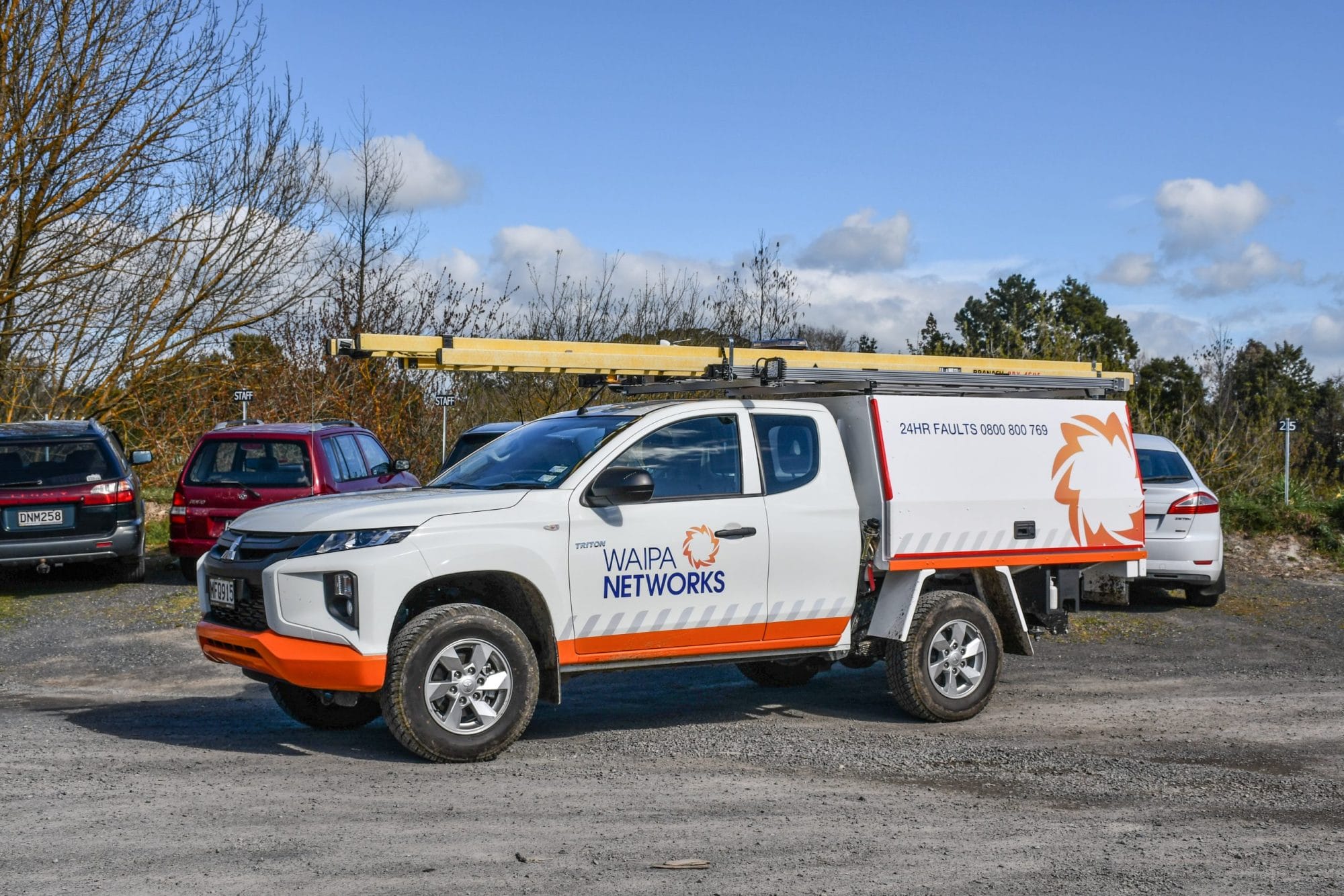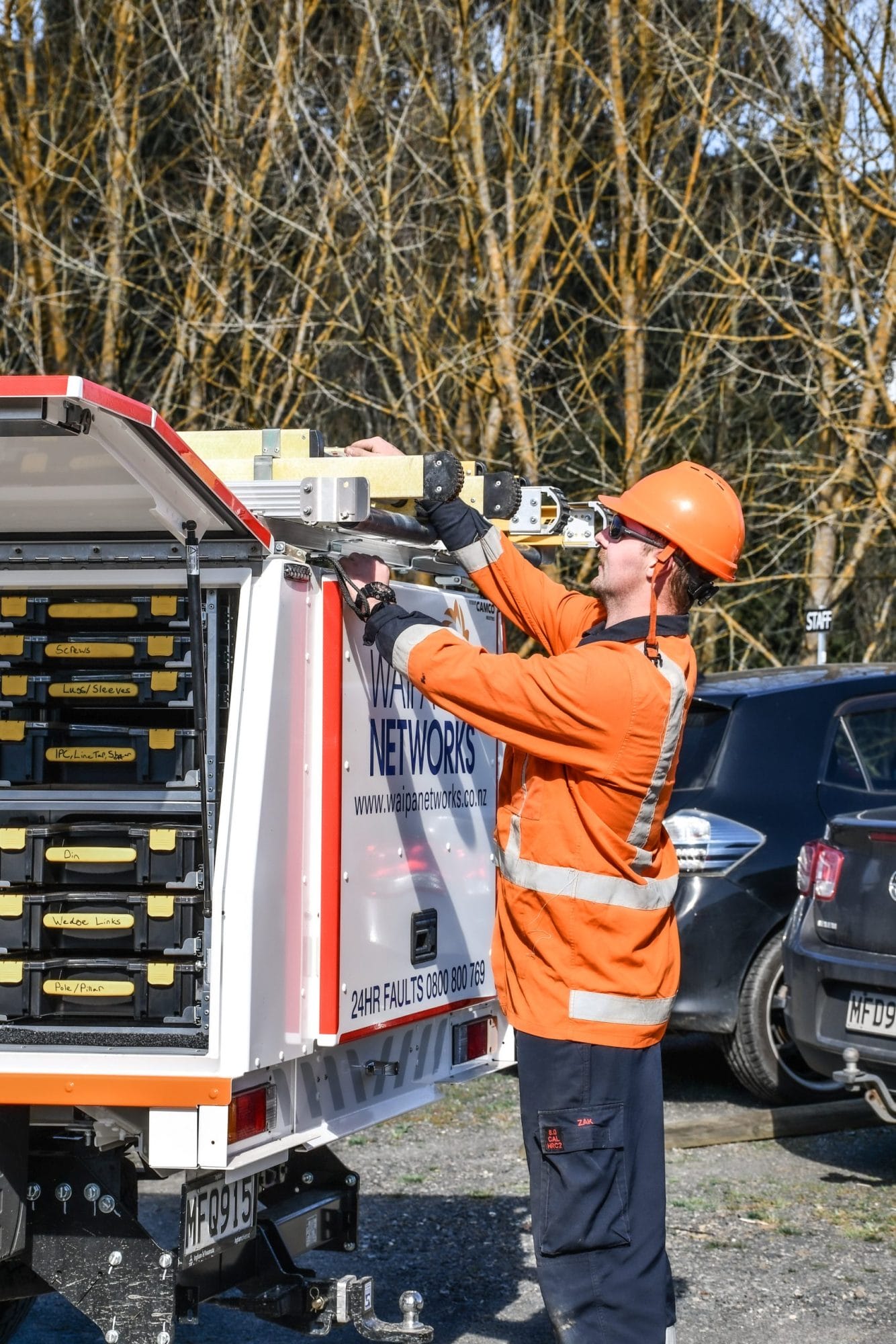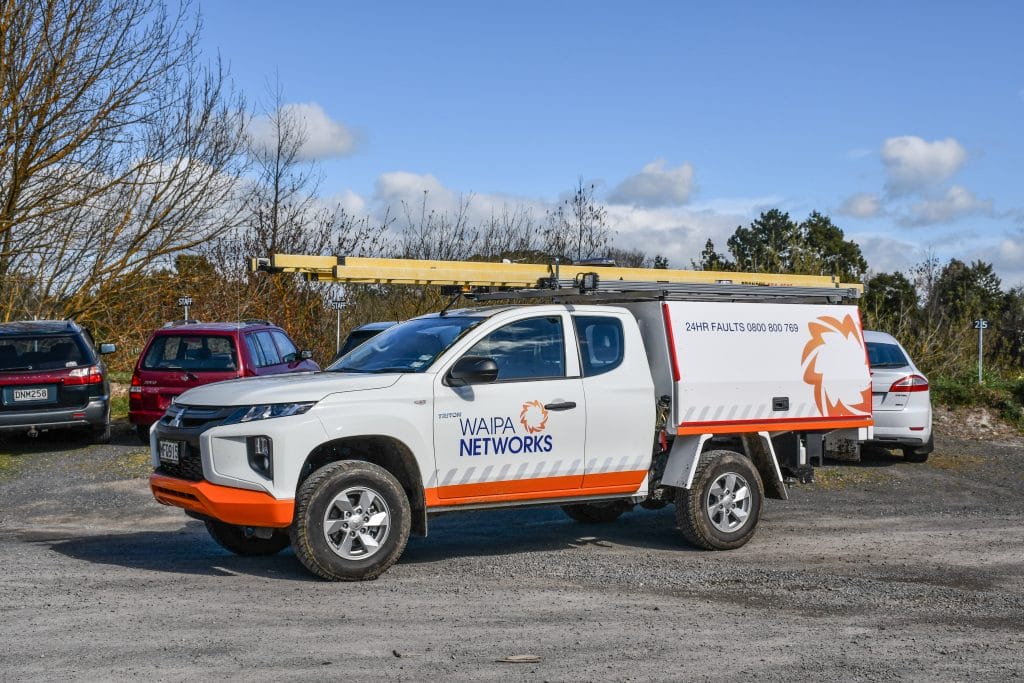Waipa Networks are a lines supply company in the Waipa Region, connecting with power company retailers to provide power to homes, farms and businesses.
 They have a light vehicle fleet of 50, including a number of Fault Response units. The Fault Response units are set up on a Mitsubishi Triton extra cab, and are the first responders to any power outage or related incident. In addition, they carry out proactive maintenance, commissioning projects and replacement programmes.
They have a light vehicle fleet of 50, including a number of Fault Response units. The Fault Response units are set up on a Mitsubishi Triton extra cab, and are the first responders to any power outage or related incident. In addition, they carry out proactive maintenance, commissioning projects and replacement programmes.
Waipa Networks approached Camco Industries in 2015 with some issues around vehicle stability and staff stretch and strain injuries. The drivers felt that the vehicles were unstable on the road and they also had difficulty accessing locations with low entry heights.
Working with the team at Waipa Networks, Camco were able to drill down to specific needs and requirements within the team that reflected throughout the power industry.
The common pain points they faced were:
- Ladder access that resulted in stretch and strain injuries
- High centre of gravity that resulted in unstable vehicles
- High kerb weights that soaked up the vehicle payload before any tools were put onto the vehicle
- Single cab utes that gave no room for the team to carry fragile items in the cab such as manuals or PPE
- Safe road-side access to the service body
From this discovery phase, the following key objectives were set to design a new fault ute specification:
- Easily accessible ladders – no higher than 2.0m above ground level
- Lower the centre of gravity to stabilise the vehicles on the road
- Design an interior fitout that worked efficiently for the guys in the field
- Change from a single cab to extra cab ute, ideally with automatic transmission
- Fit a Vertisafe® vertical road-side door to the driver’s side to avoid any protrusion of the vehicle into traffic
The team at Camco were able to use 3D CAD software to model potential scenarios before the fitouts even hit the production line, allowing the Waipa team to see exactly what they’d receive in high quality models, along with height and weight analysis.
Final specifications decided on were to lower the service body, which would drop down allowing for safer access and a lower centre of gravity to improve the vehicle stability.

- Ladder Height from the ground: 1920mm when laden
- Tare Weight: 2800kg with a driver, allowing for an additional passenger from time to time or a light trailer.
We recently had a chance to sit down with Eric Everiss – Faults Manager at Waipa Networks, to see how the utes were performing. Here’s what he had to say:
“We decided to use Camco as they are a NZ company with fantastic backup support across the country. They made sure the product they sell fits the needs of what we required. In addition, we have significantly improved the image of our fleet through using Camco products.
We had some trouble with vehicle stability and height. The height of the new service bodies allow us to access areas with low hanging trees more readily, and the weight is lower to the ground, decreasing the body roll on and off the road making our utes a lot safer and fit-for-purpose. Everything inside the service body is at a good height making it easy for out team to access their equipment.
In the past, we have had problems with staff over-reaching to get ladders down from the roof, but with the new lower service bodies the ladders are easily accessible for the team.
The staff that use the utes daily, in some of the worst weather conditions find the units a pleasure to use with the easily accessible shelving layout, making them more productive in their roles. The lighting adds a nice touch for after-hours call-outs.”



